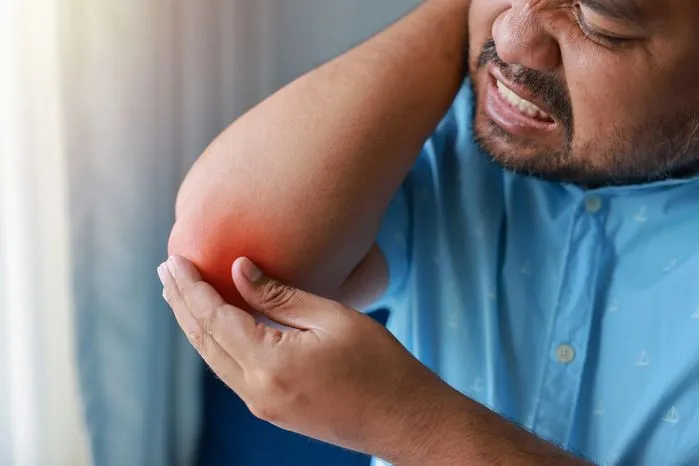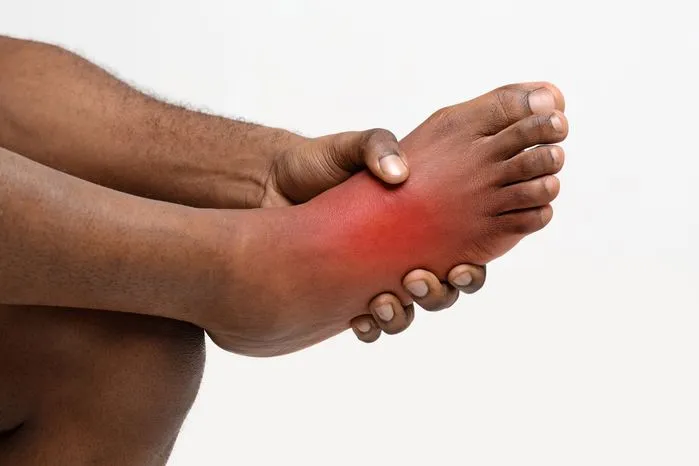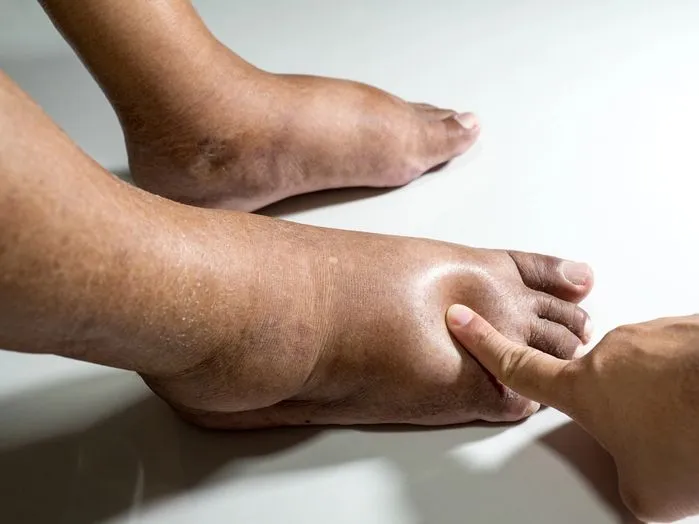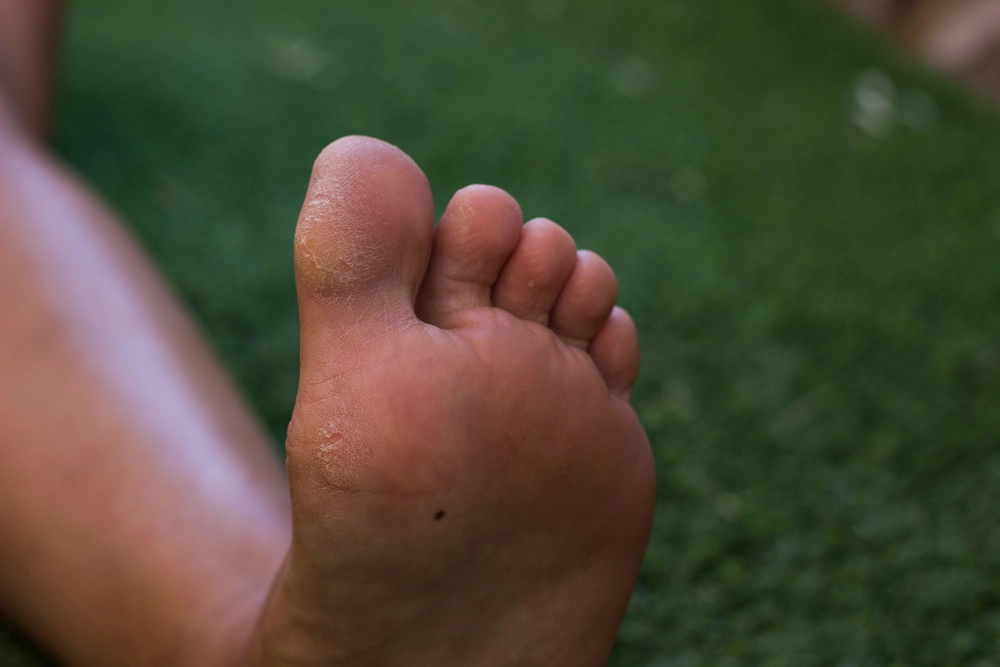
Unexplained Foot Blisters? Expert Insights from The Wound Pros
At The Wound Pros, we’ve seen firsthand how foot blisters—especially those without an obvious cause—can signal underlying health concerns. While many assume blisters come from friction or poorly fitting shoes, we frequently treat patients with blisters linked to infections, circulatory issues, and autoimmune conditions. Understanding the root cause is crucial for proper healing and prevention.
💡 Key Insights from Our Wound Care Specialists:
✔️ Not All Blisters Are the Same – Friction blisters may be common, but blood blisters, fluid-filled lesions, and recurring sores can indicate deeper medical issues.
✔️ Chronic Blisters Could Signal an Underlying Condition – We often diagnose blisters caused by diabetes, poor circulation, allergic reactions, or autoimmune diseases.
✔️ Untreated Blisters Can Lead to Infection & Complications – For high-risk patients, especially those with diabetes or vascular disease, a simple blister can turn into a non-healing wound, ulcer, or serious infection.
🔍 Common Causes of Unexplained Foot Blisters:
Friction & pressure wounds from ill-fitting footwear or repetitive motion
Blood blisters due to trauma or vascular fragility
Infections & skin conditions like athlete’s foot or bullous pemphigoid
Diabetic foot complications, where nerve damage prevents early pain detection
🔹 How We Treat & Prevent Foot Blisters Effectively:
- Advanced wound care treatments to prevent infection and promote healing
- Comprehensive foot evaluations for underlying conditions like diabetes or poor circulation
- Custom footwear & offloading strategies to reduce pressure and recurrence
At The Wound Pros, we take a proactive approach to wound prevention and treatment. This guide will help you identify the different types of foot blisters, recognize warning signs, and understand when medical intervention is needed.
Key Takeaways
- Repeated friction or skin irritation often leads to unexplained blisters on feet, with systemic diseases such as autoimmune disorders also being potential causes.
- Occurring without any identifiable reason, these blisters could indicate hidden health problems.
- These blisters, unlike their normal counterparts filled with clear fluid, may hold blood or pus.
- High-friction areas usually house standard blisters, but unexplained versions usually sprout anywhere on the foot.
- To address these mysterious blisters, use blister plasters or hydrocolloid dressings. However, when faced with severe or infected instances, professional medical aid becomes necessary.
Understanding Unexplained Foot Blisters
Unexplained foot blisters may seem alarming at first glance, but understanding their causes can be crucial. They can result from excessive friction or pressure on the feet in some instances. In other situations, these blisters could indicate underlying health issues. Comprehending blister symptomatology assists in managing these unwelcome foot phenomena effectively.
Symptoms of blisters usually involve the formation of a small fluid-filled pocket, typically serum, in the skin's upper layers. Accompanied by pain, redness, and swelling, these symptoms' severity fluctuates based on the causative factor and individual reaction to the blister.
Our bodies have an impressive innate ability to heal blisters. Interference in the process, such as succumbing to the urge to pop the blister, could lead to infection. Keeping the affected area clean, and shielded promotes natural healing.
"Unexplained blisters on your feet may seem minor, but they can be silent indicators of underlying health conditions. While friction and irritation are common culprits, mysterious blisters that appear without cause—especially those filled with blood or pus—demand attention. Identifying their origin and taking proper precautions ensures both comfort and long-term foot health."
Common Types of Foot Blisters
Understanding different types of foot blisters helps in their accurate identification and effective treatment. Friction blisters top our list, caused by continuous rubbing, typically due to poorly fitting shoes. Characterized by a clear fluid filling, these blisters are usually painful.
Allergic reactions too lead to foot blisters. Exposure to certain substances or materials, such as dyes in socks or shoes, often results in these. Extended exposure to high temperatures causes heat blisters, often due to footwear lacking breathing room or direct sunlight.
Pressure sores are another type, caused by stress on a specific foot area over a long duration. Athletes and those standing for extended periods commonly experience them.
Regardless of type, blisters require proper care. This involves keeping the affected area clean and protected, avoiding popping the blister, and seeking professional help if infection signs become apparent.
Causes of Mysterious Foot Blisters
Repeated friction or skin irritation often triggers unexplained blister formation. Ill-fitting footwear, intense physical exertion, or prolonged standing could instigate this friction. Outer skin layers rubbing against each other result in blisters.
Beyond friction, systemic diseases also induce foot blistering. Chickenpox, herpes, and autoimmune disorders such as pemphigus or bullous pemphigoid, are all potential culprits. Allergies to specific substances or medications also lead to blistering.
Bear in mind that despite known causes, sometimes blister origins remain a mystery. In such scenarios, seeking medical advice is crucial to exclude underlying health issues.
Differentiating Normal and Unexplained Blisters
Recognizing differences between regular and unusual blisters crucially impacts foot health management.
Regular blisters, often resulting from friction or heat, frequently occur on toes or foot soles due to repetitive actions. Events such as running or ill-fitted shoe walking often lead to these blisters. Containing clear fluid, they usually heal naturally within several days.
Contrastingly, unusual blisters, potentially unexplained ones, present a different situation. Such blisters may materialize without obvious reason, may contain blood or pus, and their localization could be any foot part.
1. Friction, heat, or minor burns typically cause regular blisters.
2. Unusual blisters might appear without a clear cause, potentially indicating health problems.
3. Regular blisters generally contain clear fluid, while unusual ones might contain blood or pus.
4. Location differentiates; high-friction areas like soles or toes often house regular blisters, while unusual ones materialize on any foot part.
Preventing and Treating Foot Blisters
Prevention and treatment demand a keen understanding of foot blisters, regardless of their regular or mysterious nature. Neglecting these minor nuisances escalates to serious issues like infections, not to forget ongoing discomfort and pain.
Avoidance of blisters represents the initial line of defense. This is achievable through simple measures such as wearing suitable footwear, keeping feet dry, and using blister prevention tapes or bandages during demanding activities. Such steps establish a barricade between the skin and friction-causing elements.
Despite these preventive methods, blisters might still develop. This is where remedies for blisters become crucial. Protecting the blister along with preventing infection becomes the primary focus. Readily available treatments such as blister plasters and hydrocolloid dressings can provide relief. At home, applying aloe vera or green tea, both known for their calming properties, might also help.
In the event of severe cases or infected blisters, seeking professional medical help becomes necessary.
Supporting Facts and Statistics
According to the California Department of Consumer Affairs, uncomfortable or poorly fitting shoes cause foot problems for nearly 80% of Americans, with blisters being one of the most common issues.
The Centers for Disease Control and Prevention (CDC) stated that diabetes raises the risk of foot problems, including blisters. The CDC advises daily foot checks for cuts, redness, swelling, sores, blisters, corns, or calluses to prevent complications.
Meanwhile, The National Institute of Arthritis and Musculoskeletal and Skin Diseases (NIAMS) emphasized that EB includes rare diseases that weaken the skin, causing blisters on the feet and other areas. NIAMS warns that blisters can form anywhere and may lead to complications if infections occur.
Releford Institute’s Opinion on Foot Blisters
Foot blisters that emerge without apparent cause are prevalent yet often misinterpreted. Such blisters may arise due to numerous factors, including frictional forces, fungal invaders, or underlying health conditions. At RelefordInstitute.com, we believe that distinguishing between regular and mysterious blisters is integral for their adequate treatment. Measures for prevention alongside suitable treatments facilitate effective management of these skin disruptions.
Frequently Asked Questions
How do you treat blisters on your feet?
To treat blisters on your feet, first clean the area with mild soap and water. Then, apply an antibiotic ointment and cover it with a bandage. Avoid popping the blister as it could lead to an infection.
Should I pop or leave a foot blister?
It's generally better to leave a foot blister unpopped. Popping it may introduce bacteria and increase the risk of an infection. Your body naturally absorbs the fluid as the skin underneath heals.
Is it okay to walk on blistered feet?
It's not advisable to walk on blistered feet, as it can increase pain and risk of infection. If you must walk, try to protect the blister with a bandage or blister plaster and wear comfortable, well-fitting shoes.
What are water-filled blisters on feet?
Water-filled blisters on feet are fluid-filled sacs that develop in response to friction or pressure. The fluid, which is usually clear, helps cushion and protect the underlying damaged skin and aid in healing.
Should you cover a blister or let it breathe?
It's a good idea to cover a blister with a bandage or blister plaster to protect it from further friction or pressure. While it's important to let it breathe occasionally, keeping it covered will generally promote faster healing.
What do sepsis blisters look like?
Sepsis blisters appear as large, dark patches on the skin, often filled with fluid. They may be painful and are usually accompanied by other symptoms of sepsis like fever, chills, and rapid breathing.
How to speed up blister healing?
To speed up blister healing, keep the area clean and dry, and protect it with a bandage. Applying a healing ointment like petroleum jelly can also help. Avoid popping the blister, as this can delay healing and increase the risk of infection.
What ointment is good for blisters?
Antibiotic ointments, like Neosporin, are good for blisters. They can help prevent infection and speed up the healing process. Be sure to clean the blister and surrounding area before applying.
How long do foot blisters last?
Foot blisters typically last for about one to two weeks. The healing time can vary depending on the size and location of the blister, as well as how well you care for it.
What does a diabetic foot blister look like?
A diabetic foot blister can look like a large, painless, water-filled blister, often surrounded by red skin. It can appear anywhere on the foot but is most common on pressure points like the sole or the ball of the foot.
Is it good to soak feet with blisters?
Soaking feet with blisters in warm water with mild soap can help clean the area and soothe the blister. However, it's important to thoroughly dry your feet afterward to prevent moisture-related infections.
Does Vaseline heal blisters on feet?
Vaseline can help heal blisters by keeping the area moisturized, thus preventing skin from drying and cracking. However, it does not have any antibiotic properties, so it won't protect against infection.


















